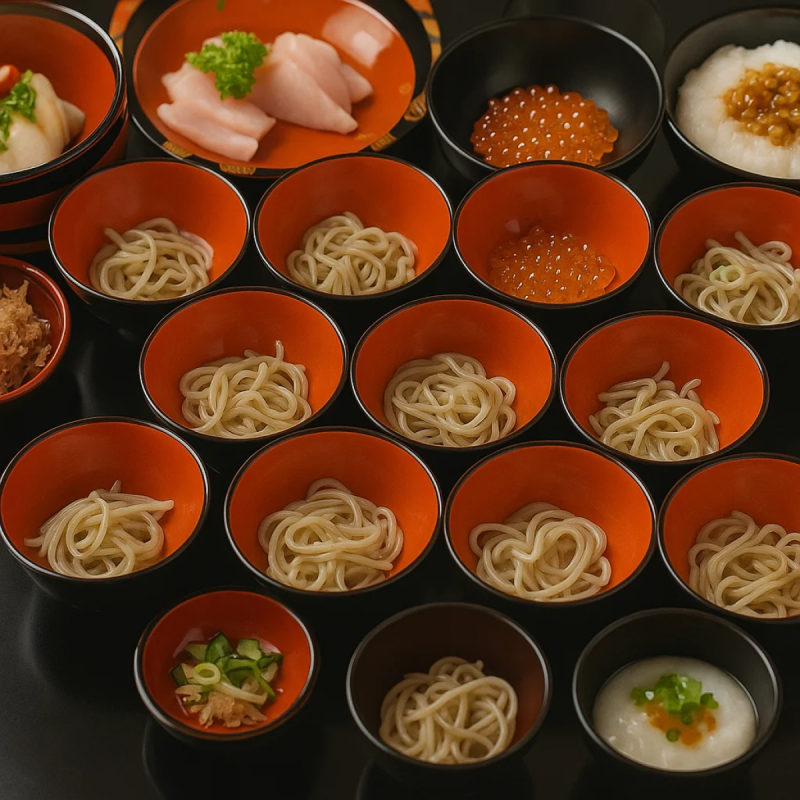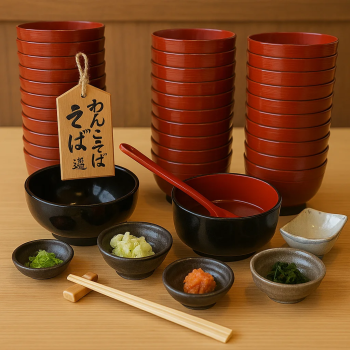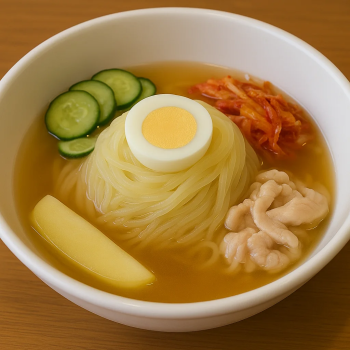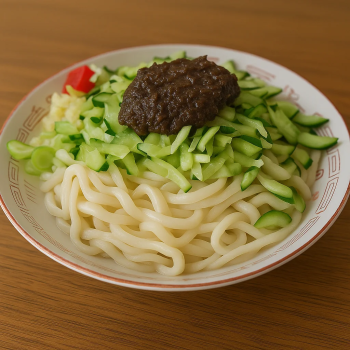The best place to enjoy Morioka’s famous noodles is in the city center, especially around the main shopping street and Morioka Castle Ruins Park. This area is filled with casual eateries and specialty restaurants serving all three of the city's signature noodle dishes. It’s the perfect spot to explore Morioka’s rich culinary heritage and sample everything in one visit.

Morioka Noodles
Morioka is a paradise for noodle lovers and proudly home to the “Three Great Noodles of Morioka” (盛岡三大麺): Wanko Soba, Reimen, and Jajamen. These local specialties reflect the city’s diverse culinary roots and cultural creativity. Blending Japanese, Korean, and Chinese influences, each dish has evolved into a beloved staple of Morioka’s food scene and continues to be cherished by both locals and visitors.
You’ll find these noodles throughout the city, especially in downtown Morioka near the main shopping streets and Morioka Castle Ruins Park. From casual eateries to long-established specialty restaurants, many places even serve all three varieties on a single menu—making it easy to sample them in one visit.
Types of noodles

Tiny portions
Wanko Soba is all about fast-paced servings and fun. Tiny portions of soba noodles are served one after another, and the goal is to eat as many as you can. You start with a plain bowl to appreciate the flavor, then add toppings as you go. On average, women eat around 30 to 40 bowls, while men typically reach 50 to 60!

Cold noodle dish
Morioka Reimen is a chilled noodle dish with Korean roots, created by a North Korean resident in the city. The noodles are smooth and glossy, made from a mix of potato starch and flour, and served in a cold broth topped with sliced meat, kimchi, cucumber, half a boiled egg, and a slice of fruit—typically pear or watermelon.

Thick udon-style
Jajamen is based on a Chinese dish but has been adapted to suit local tastes. It features thick, udon-style noodles topped with a scoop of meat miso, green onions, cucumber, and a touch of ginger. Mix everything together, then add vinegar, chili oil, or garlic to your liking. After finishing the noodles, you can ask for "chitantan" — a warm soup made from the leftover miso, hot water, and a raw egg.
Where to eat
Google MapsReviews
There are no reviews